In a general sense, the role of 忍者 in feudal Japan was best described as that of spies or covert agents - intelligence gathering, sabotage and assassination. The two biggest 忍者 clans were known as 伊賀 (いが - Iga) and 甲賀 (こうが - Koga), named after the regions they were based in - modern day 三重県 (みえけん - mie ken - Mie Prefecture) and 滋賀県 (しがけん - shigaken - Shiga Prefecture) respectively. Historically, they seem to be seen as a foil to the 侍 (さむらい - samurai), soldiers who followed a code known as 武士道 (ぶしどう - Bushidou - "the way of the warrior"); this dictated what was considered fair and honourable in life and death. The 伊賀 and 甲賀 忍者 had no such reservations - they did whatever was necessary to get the job done quickly and discreetly, as we shall see. Also unlike the 侍, who were born into the higher warrior class, 忍び were labourers and farmers; this explains a lot more about their lifestyles, training and equipment than you might think.
Hygiene and diet
Needless to say, the key to this line of work was escaping detection. A lot of thought has been dedicated to how they avoided being seen and heard, but not so much to smell. The importance of this wasn't lost on the 忍者 - the slightest odour or scent they had picked up could have meant certain death. For this reason, they were perhaps the most hygienic members of feudal Japan; they washed themselves and their clothes very regularly. They avoided meat for the same reason, believing that eating it would give them a detectable body odour. Their diet consisted of 豆腐 (とうふ - tofu), grains and 野菜 (やさい - yasai - vegetables). This diet had the added bonus of controlling their weight for when they needed to squeeze into a tight spot or pull themselves up out of one. Living as a farmer meant that the 忍者 could grow their own food and cultivate medicinal herbs for use in missions without attracting any undue attention.
Houses
Surprisingly, 忍者 houses are one part of the story that hasn't been too exaggerated; they did indeed contain secret tunnels, false walls and traps for the unwary. Presumably the 忍者 expected the occasional ambush, because there are still working examples of buildings engineered to help fight them off. どんでん返し (どんでんかえし - donden kaeshi - revolving doors), for example, were hidden devices for use in case the 忍び wished to disappear quickly. As suggested by pop culture, they were false walls fitted to pivots that could be spun freely.
The skill in using them is to rotate the wall precisely enough to make sure it's completely flush and that you're not there when it is. Through quick use of どんでん返し, the 忍者 could vanish before the attackers even got into the house, allowing some time to escape or plan a counterattack. The latter was especially effective from 警戒の場 (けいかいのば - keikai no ba - hidden observation posts), which were obscured rooms that offered a good view of the room from head height. Some particularly outrageous hidden passages or staircases could even lead outside, allowing the 忍者 egress out of an empty well or the like if the foe was too much to handle. More commonly, しかけ戸 (しかけと - shikake to - trick doors) looked and felt like half-height panels in the wall, but featured twin latches that could only be unhitched by pieces of paper. If the 忍者 unlatched both simultaneously, the seemingly solid panel would swing open and allow escape into the night.
Should the 忍者 decide to stay and fight, there were plenty of options available. 物隠し - (ものかくし - monokakushi - hidden object spaces) were spots underneath the floorboards that could only be opened if the 襖 (ふすま - fusuma - sliding screens) were opened in a certain pattern; once the right door jamb was removed, the floor panels could be flipped up and important supplies and documents could be stored in the sand underneath. Similarly, if you were unlucky enough to cross 忍者 with a 刀隠し (かたなかくし - katanakakushi - hidden sword space), they would be able to kick a certain floorboard in the right place, it would leap up and you would have a 刀 (かたな - katana) at your throat before you could react. Two can play at this game, of course - there are plenty of residences designed to protect against 忍者 as well. For the most part, the traps were simple but clever ones such as blind corners, uneven floors designed to trip the unwary and staircases that lead to nowhere. Occasionally things were done with a bit more "flair" though, like in 二条城 (にじょうじょう - nijoujou - Nijou Castle) in 京都 (きょうと - Kyoto). With its squeaky "nightingale floors" and hidden rooms full of 侍, I can't imagine many 忍者 would have been thrilled about visiting.
忍者 Training
忍び were more than just warriors - the nature of their work was extremely demanding and required mastery of a number of diverse skills. They were truly the original all-rounders - they needed to be familiar with a huge array of disciplines including psychology, medicine, chemistry and astronomy. Missions required an enormous amount of preparation and the 忍者 needed to be self-sufficient from start to finish; this required extensive physical, mental and survival skill.
Physical skills
忍者 needed to be extremely strong and tough so that they had the stamina to finish long missions. Apart from their martial arts training which began in early childhood, they also trained themselves until they were able to lift a 60kg bale of rice with their thumb and forefinger. If they could do that, they could suspend their own body weight from the ceiling in any position; needless to say, they were very strong for their small size. They also trained in numerous methods of silent movement - in fact, "忍び" literally means "stealth". Without a doubt, the strangest of these is called "深草兎歩き" (しんそうとほあるき - shinsou toho aruki), meaning "deep grass rabbit walking". This involves holding your feet in your palms and walking along on the backs of your hands, which must be very effective for how difficult it sounds. I'm told it's a "top secret" technique, so don't spread it around too much.
Mental skills
忍者 were often required to supply information and having it written down in a letter meant that it could easily fall into the wrong hands. The only way to be sure secrets made their way to the right person was to memorise them and make the delivery in person and for that purpose, an excellent memory was required. 忍者 would use mnemonics to help them retain information, making associations with body parts or food. If particularly sensitive information needed to be retained, the 忍者 would sometimes even injure themselves when committing it to memory or trying to recall details. This should give some indication of how seriously memory training and mental associations were taken.
In case messages had to be passed on non-verbally, 忍者 also had numerous secret codes involving coloured rice, hand signals, secret characters and even knotted ropes that could be hung conspiciously outside to pass on information to someone in the know. They also studied human psychology and sleep patterns, to make sure they could recognise when their potential target was sleeping most soundly by the sound of their breathing. On top of all this, they were well versed in chemistry, able to make gunpowder, explosives and poisons to further aid them in their work.
Survival skills
The double life of a 忍者 helped significantly in preparation for dangerous missions, for the simple reason that they could grow medicinal herbs without anyone looking twice. 忍者 were very familiar with medicine and able to treat injuries and sickness in the field, which was an essential part of working alone. They made a habit of sleeping on their left side to protect their hearts in case they were attacked during the night, sleeping silently and lightly to make sure they had a chance to defend themselves if necessary. They also took a keen interest in astronomy to help navigate, read phases of the moon to calculate the ideal night to strike and predict weather patterns to make sure nature was on their side during the mission. When you're a one-man team, it pays to be fairly good at everything.
忍者 Equipment
Clothes
Contrary to what you might expect, there's very little evidence that 忍者 actually dressed in black. Even by night, black stands out so it wouldn't fulfill its purpose very well. Navy blue was much better for nighttime camouflage; it was a bonus that 伊賀 farmers wore navy blue clothes which helped the 忍者 blend in by day as well. The 忍び装束 (しのびしょうぞく - shinobi shouzoku), or traditional 忍び outfit allowed the 忍者 to disappear amongst the community and carry around useful farming tools without suspicion. 忍び装束 had the added bonus of being quite baggy, meaning blades could be concealed in the lapels and bronze or iron mirrors could be hidden in the breast to protect the heart.
The 忍び装束 was also reversible to allow for quick clothing changes. There were several staples in the 忍者 wardrobe, known as the 七方出 (しちほうで - shichihoude) or seven ninja disguises; Buddhist priest, travelling priest, novice priest, merchant, acrobat, street musician and regular wear (farmer or warrior). Once they had concealed their identities appropriately, 忍者 could pass between towns without harassment - most of the disguises meant they could completely conceal their faces or carry weapons without raising any eyebrows. When on the road, they would wear 草鞋 (わらじ - waraji - straw sandals), which were nice and light and could be fitted with spikes for helping to walk up steep slopes or in snow. When doing something they shouldn't, they would wear 足袋 (たび - tabi - socks) with cotton soles, ideal for moving silently indoors.
Tools
While it's fun to imagine 忍者 as walking pocket knives stowing armfuls of specialised equipment, the reality is that anyone silly enough to be so obvious would have been quickly dealt with. Like the clothing, the tools of the trade had to be as inconspicuous as possible - nearly everything the 忍者 carried was a repurposed farmer's tool.
苦無 (くない - kunai) were common digging implements used for planting, but in the hands of a capable 忍者, they could be used as knives or stabbed into walls to support ladders. Similarly, regular 釘 (くぎ - kugi - nails), when not being used around the farm, could be banged between rocks to provide footholds for climbing.
鎌 (かま - kama - sickles), when not cutting weeds, could be used to help climb or cut ropes, or tied together as a makeshift grappling hook. Similarly, the 鉤縄 (かぎなわ - kaginawa - rope and grappling iron), while almost always shown helping 忍者 scale walls, was originally designed to retrieve things dropped into wells. 錣 (しころ - shikoro - saws) could be used to cut locks and 坪錐 (つぼぎり - tsubogiri - gimlets) to drill holes in fences and walls if there was someone on the other side worth keeping an eye on. As you can imagine, the possession of all of these objects could be justified and the 忍者 would hopefully be able to continue on their way without unnecessary trouble.
There were some outrageous exceptions, of course - 水蜘蛛 (みずぐも - mizugumo - literally "water spider"), for example were huge "mud shoes" to assist in crossing swampy moats. Regular water could be easily swum across and dry moats could be climbed across by night without too many problems, but castles protected by natural bogs posed more of a problem. The 水蜘蛛 distributed the wearer's weight across a wider area so he could walk across the swamp. This probably gave rise to the misconception that 忍者 could walk on water; "walk on mud" probably didn't sound impressive enough to whoever started the rumour.
Weapons
For the most part, the 忍者 weapons we know and love would have given away the game from a mile away, so we can assume that most of the fighting would have been done with some of their existing tools; 鉤縄 were used to trip up and bind foes, 苦無 could be thrown and 鎌 were often used to dispatch people wondering what happened to the farmer they were just speaking to. A lot of the more well-known 忍者 weapons were far harder to conceal, so they would likely have only been carried in specific situations. These included 刀, projectiles such as the 手裏剣 (しゅりけん - shuriken or "ninja star"), firearms and explosives.
The 忍び刀 (しのびがたな - shinobi gatana - ninja sword) was the 刀 of choice for the most part. Unlike those carried by the 侍, the 忍び刀 was straight-bladed, designed for stabbing rather than slashing. It would often have a rope tied to its scabbard so that it could be used as a climbing aid; it would be driven into the ground and used as a stepping stone, then retrieved from above.
For longer range assassination, the 忍者 had a variety of projectiles. 吹き矢筒 - (ふきやづつ - fukiyazutsu - blowpipes) were used to silently fire poison darts at their unsuspecting victims. In order to escape detection, they were often disguised as flutes, lined with paper to block the holes from inside. I'm told this was a particularly popular weapon amongst くノ一 (くのいち - kunoichi - female ninja), so if you ever come across a Japanese flute player, it might pay to have her play you a tune to double check.
The 手裏剣 is the best known assassination weapon, with a variety of shapes available. Like the 吹き矢筒, it was often laced with poison to increase its effect. Unfortunately, the image of 忍者 throwing hundreds of them is complete fiction, both from a physical and practical point of view. Each 手裏剣 weighed between 100 and 200 grams so carrying or throwing more than a few, let alone dozens, would have been impossible. Even being seen with one would identify the holder as a 忍者 immediately, so it was used more as a last resort than the solution to every problem.
That's not to say their reputation is entirely undeserved - when thrown properly, 手裏剣 can be embedded deeply into wood and a good shot would mean certain death.
In case this wasn't terrifying enough, they could be laced with gunpowder and a match to create 火車検 (ひぐるまけん - higurumaken - incendiary shuriken). In a time when everything was made of paper and wood, fire would have been a very effective physical and psychological weapon.
This brings us to explosives and firearms - 忍者 were not above using rifles, bombs and even cannons to get the job done. With an intimate knowledge of explosives, it was possible to achieve a variety of effects - most often to distract enemies with a loud noise or plume of smoke in the vital moment. While the 忍者 didn't exactly vanish into thin air, they could effect impressive escapes with some clever timing and equipment.
Finally, should the distractions fail and the 忍者 find himself pursued, it was time to get out the まきびし (makibishi - caltrops). These were spikes made of iron, wood, or natural plant seeds that could be scattered on narrow paths to slow, trip or injure pursuing enemies. If all went to plan, the 忍者 would live to fight another day and the guards would have to limp back to explain their failure to catch up.
So as you can see, while the 忍者 weren't firebreathing sorcerers capable of turning invisible, walking on water and riding dragons, they were extremely well-prepared, well rounded mercenaries with astonishing mental and physical skill. Under cover of night with some well-placed acrobatics, science and intimate knowledge of the human mind, it's not hard to imagine how they seemed to border on the supernatural. Indeed, the 忍者 themselves would have been quite happy to let the rumours spread. It's much easier to misdirect and terrorise someone who's convinced his foe is superhuman; the legends probably helped to achieve the unachievable. For better or worse, they also make for some excellent TV!

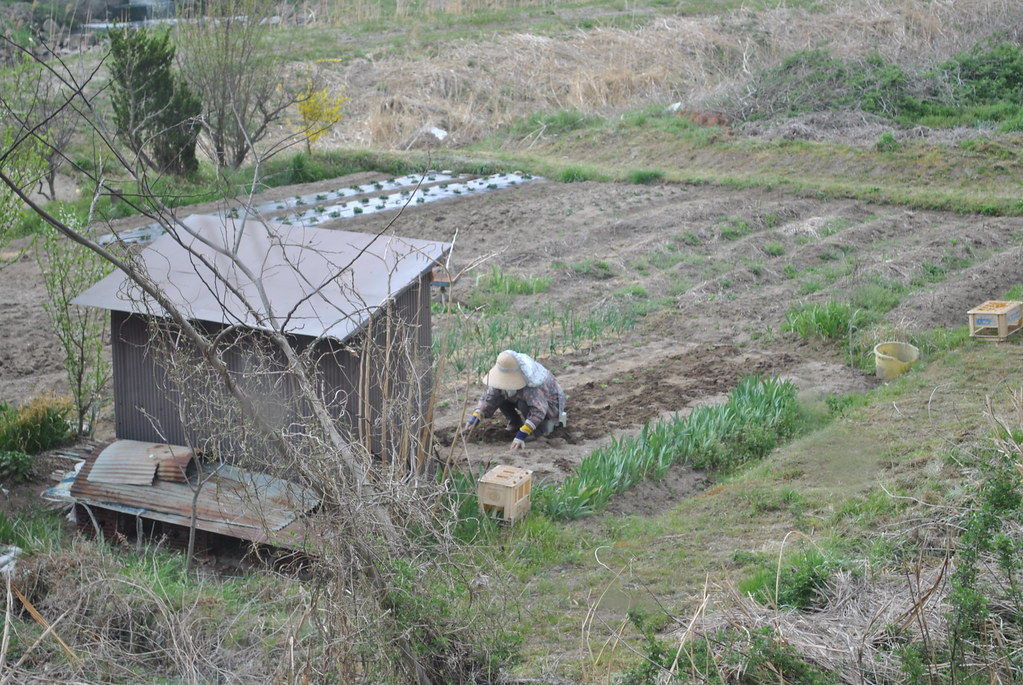


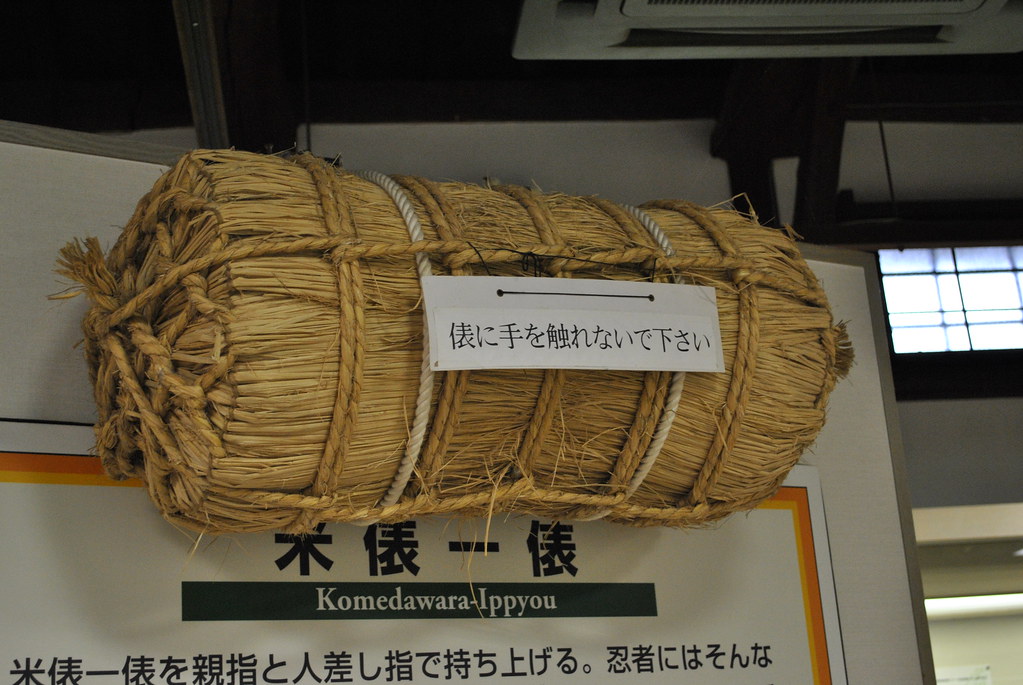




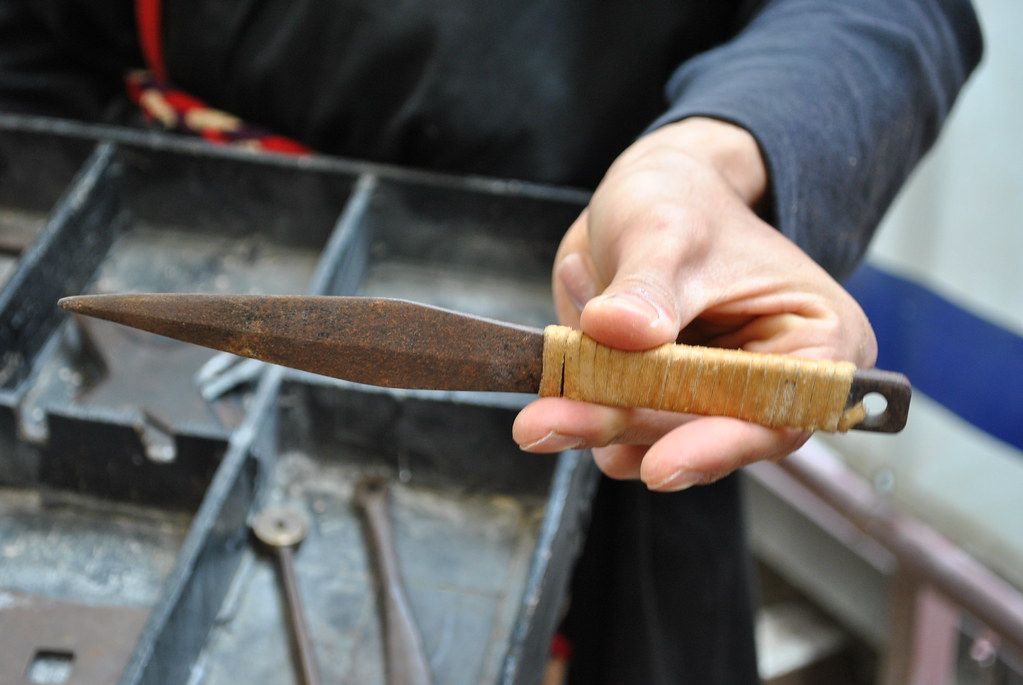


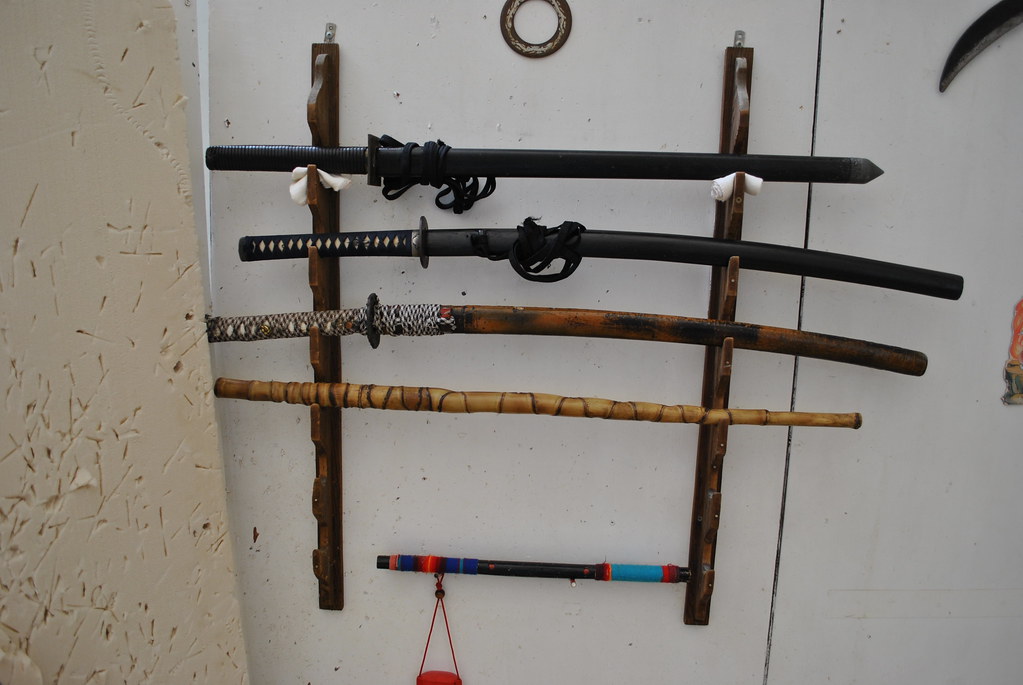

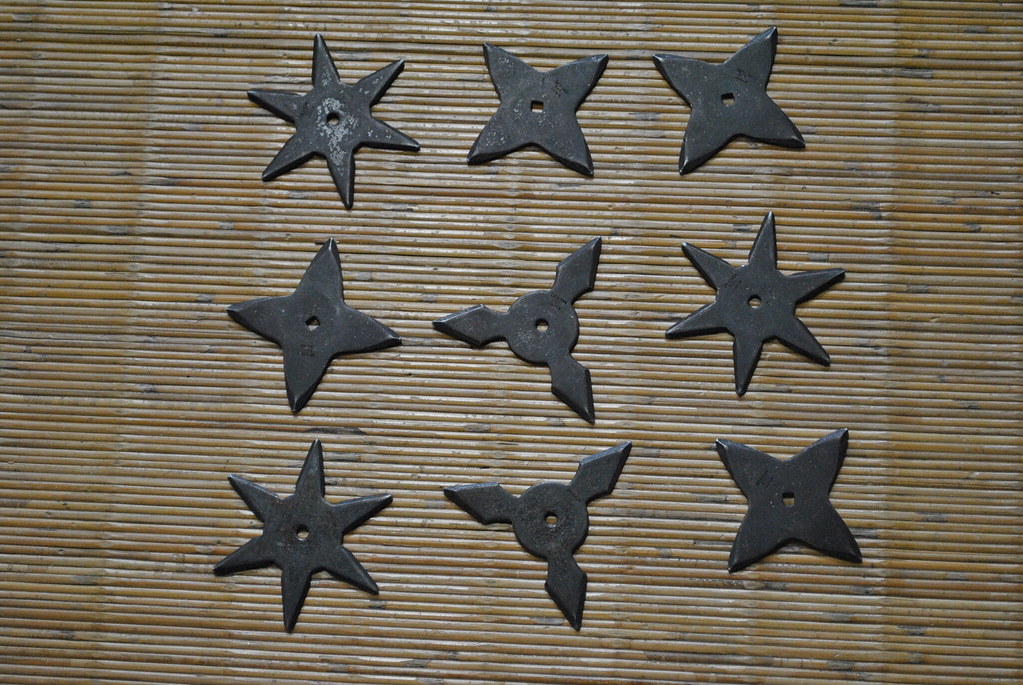

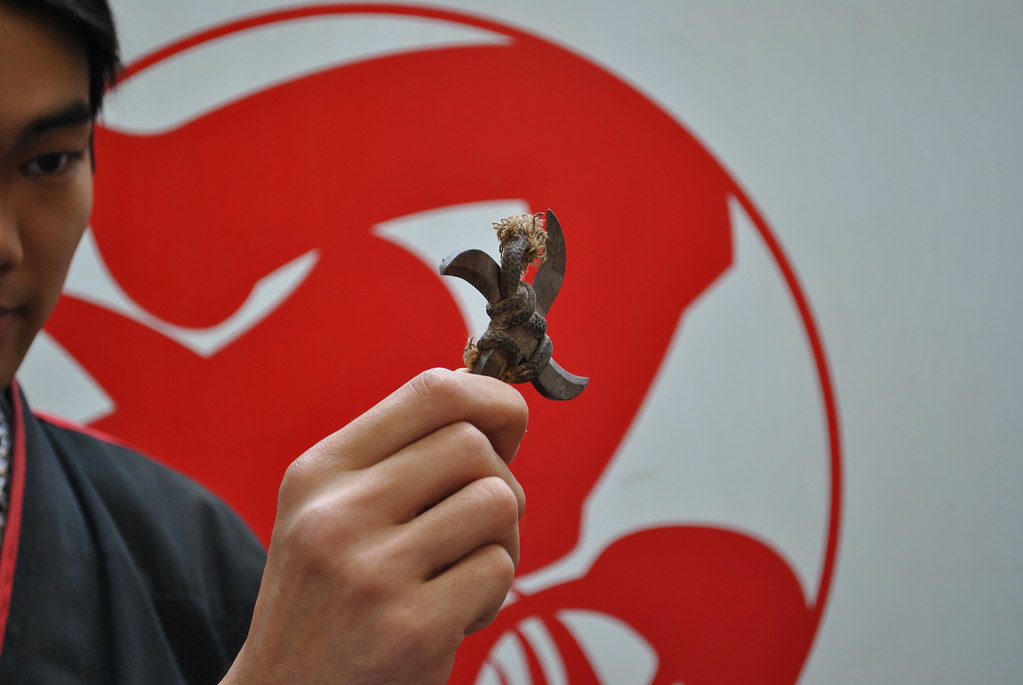

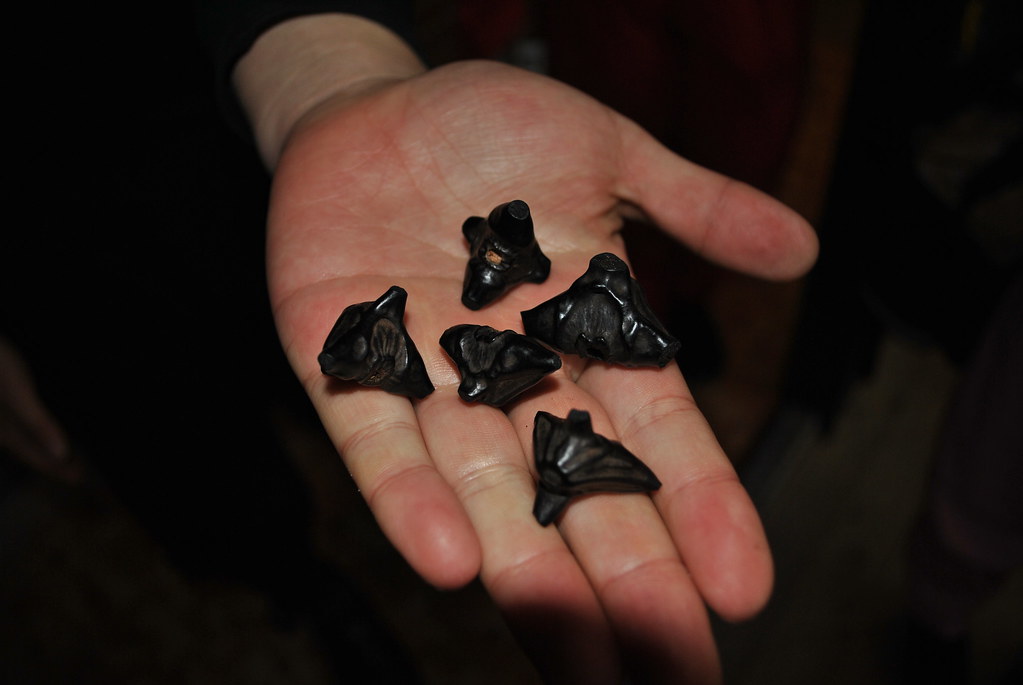

Today's photos are from the fantastic 伊賀 忍者 museum and live demonstrations. Their website contains plenty more information about 忍者 for those interested:
ReplyDeletehttp://www.iganinja.jp/en/
And as a final note, I thought this was interesting:
ReplyDeleteWhy are くノ一 so called, in such a weird mix of ひらがな (hiragana), カタカナ (katakana) and 漢字 (かんじ - kanji)? Put these 3 "strokes" together and see what you get:
"女" (おんな - onna - woman).